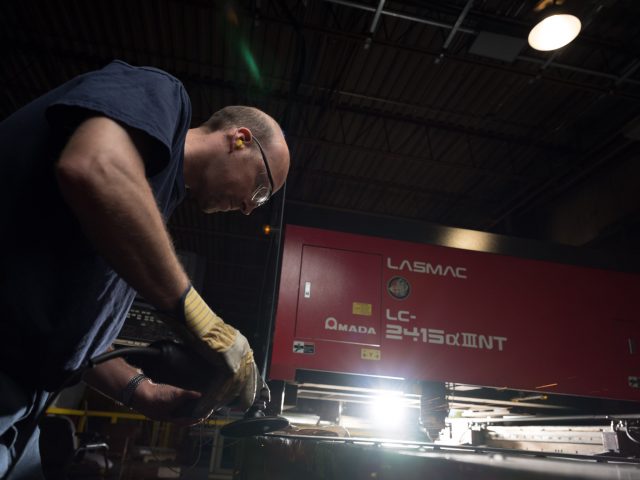Structural steel fabrication plays a vital role in nearly all sectors of today’s industry. Such fabrication operations take metal and turn it into any desired shape or design needed for any application. As a material, stainless steel offers enhanced mechanical properties that make it ideal for structural fabrication projects. Stainless steel is flexible and can be easily shaped, molded, and formed into a wide range of designs. It is also remarkably strong. Unlike other common building materials such as wood, concrete or aluminum, the sheer strength of steel is higher than its density which makes it an excellent choice material for manufacturing, construction, components, and building.
For example, metal fabrication is often used in architectural metal fabrication projects. Because its physical properties lend itself well to maintaining healthy, sanitary conditions, stainless steel fabrication is also a popular method in food services and food processing industries. Stainless steel fabrication presents numerous benefits for manufacturers and other consumers. Metal fabrication then is integral to manufacturers and other consumers.
In choosing stainless steel for structural fabrication, four significant advantages worth reviewing are the material’s durability, sustainability, cost, and safety.
Durability
Stainless steel is durable, which, in terms of structural fabrication, makes it one of its more attractive mechanical properties. It’s low maintenance, utilitarian material, resistant to corrosion, which adds to its long life. Its durability directly relates to its cost-effectiveness and sustainability. By helping to prolong the life cycle of material, it is often the least expensive choice in a life cycle cost comparison. In structural fabrication, buildings and bridges susceptible to corrosion are better served.
Sustainability
When considering all the benefits that stainless steel offers for structural fabrication projects, sustainability should be near the top of the list. It is not only environmentally sustainable but economically sustainable as well. Steel products are near 100 percent recyclable. In the United States alone, 90 percent of steel products continue to be recycled annually. Because stainless steel is highly adaptable and recyclable, no material needs to be wasted if building or structural fabrication requirements are modified or altered. When projects are completed, stainless steel has a very long life. Manufacturers, builders, and consumers can focus their financial resources on other projects rather than restoring and renovating.
Cost-effective
Stainless steel is more cost-effective than other building materials. Prices are generally stable and remain affordable for manufacturers and consumers. Its ROI over time relates to its strength and reliability. Its carbon content gives the metal superior strength, lightweight, and low ductility that makes it adaptable for a variety of commercial and industrial applications. It also makes it malleable and easily fabricated to improve its functionality. Since steel is lighter but stronger than other building materials, less material is required.
Safety
Safety is an important factor in choosing the material for use in structural fabrication. Because grades of stainless steel have inert, non-reactive properties, as a material, it has limited health and safety concerns. It can be easily cleaned and is resistant to mold. This explains why stainless steel fabrication projects are commonly found in the medical and food service industries. Utilizing stainless steel coated with self-extinguishing materials further ensures that structural fabrication projects such as residential and commercial buildings are not subject to catastrophic fires. Finally, when used in construction and building, stainless steel fabricated parts are resistant to pests such as termites.
From Avant-garde architectural design to industrial applications, stainless steel fabrication offers a wide variety of choices and applications for manufacturers and other consumers. This type of fabrication ensures long-lasting, durable, sustainable, and safe performance, all while optimizing costs.



